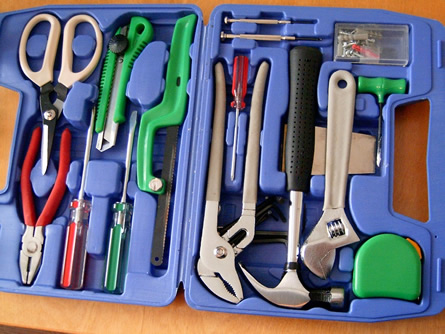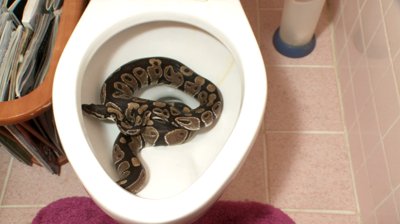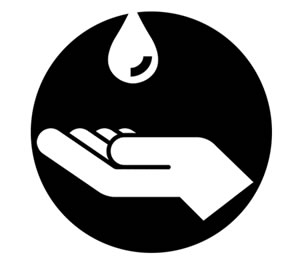Old Plumbing: Repair or Replace?

Older plumbing fixtures and appliances often break down. This leads homeowners to a decision on whether to repair or replace. When deciding if older plumbing needs to be replaced or repaired, there’s a few things to take into consideration.
1. Cost of Repair
Is repairing the item going to cost more than simply replacing it? If so, replacing it will be the less expensive option, and the item will likely last longer than another repair.
2. Number of Repairs
How many repairs has this plumbing item had over the years? If there’s something that keeps breaking down and needing repaired, it might be easier and cheaper to just replace it with a newer, better version.
3. Age
Many plumbing fixtures and appliances can last over a decade when they receive routine maintenance. If the item in question is close to the general life expectancy and will likely breakdown in the next year or two, replacing it now is a worthwhile decision.
4. Energy Efficiency
When replacing older plumbing fixtures and appliances, homeowners usually go with a model that is more energy efficient than the old one. This helps to save money on water or other utility costs. So if upgrading will help cut costs, replacing instead of repairing might be the answer.
5. Safety
Safety is extremely important. If the plumbing could affect safety and health, like lead pipes, it should be replaced as soon as possible.
Homeowners who aren’t sure what old plumbing fixtures and appliances should be replaced or repaired should ask the experts at All Star Plumbing and Restoration. We can come out and inspect the item in question before giving homeowners our recommendation on the matter.
Funny Plumbing Terms

Plumbing can be a pretty humorous topic. This is especially true when it comes to some of the terms that are used in plumbing. Here are some terms that aren’t exactly what they sound like:
- Snake
Don’t be afraid! When plumbers snake a toilet, they aren’t using a reptile, but a flexible spiral-wound metal. It’s inserted into the drain and rotated to clear any clogs.
- Back Pressure
No, there’s no chiropractor involved in this. Back pressure refers to pressure that resists the flow of fluid in the plumbing system.
- Bonnet
In plumbing, a bonnet is still sort of a hat because it sits on top of something, but it doesn’t get worn by a person. It refers to the top of a compression valve assembly that holds the valve in place
- Trap
This doesn’t catch animals, but instead catches sewer gases to keep them from entering the bathroom.
- Flapper
Drop the fringe and step away. In plumbing, a flapper isn’t a woman from the 1920’s. It is a rubber flap that sits in the bottom of the toilet. The flapper allows flushing and seals off the tank for refilling.
- Dam
Don’t worry, beavers haven’t invaded the bathroom. A dam is a barrier in the toilet that controls the water level.
In their line of work, plumbers have to have a sense of humor. It’s just part of the job. Next time All Star Plumbing and Restoration comes over to fix something, you’ll know what some of those funny terms actually mean.
Water Waste and Conservation
 Water waste is a concern for not only the environment, but everyone who pays water bills. Wasting water can cost homeowners a significant amount of money. Here are some facts about water waste:
Water waste is a concern for not only the environment, but everyone who pays water bills. Wasting water can cost homeowners a significant amount of money. Here are some facts about water waste:
- 127% more water is used today than was used in 1950
- Leaving the faucet on while brushing your teeth can waste 4 gallons of water
- Older toilet models use 3 gallons per flush
- 3,000 gallons of water per year is wasted by a faucet that leaks one drop per second
- 10,000 gallons of water is wasted per year throughout the home
Everyone can do their part to use less water, which will in turn help lower water bills. Here are some tips:
Upgrades and Repairs
Homeowners can upgrade the toilet to a newer, low-flow model. Newer toilets use only 1 gallon of water per flush compared to the three that old models use. This means, low-flow models can save about 18,000 gallons of water per year. That’s almost enough water to fill two swimming pools!
Leaky faucets don’t seem like that big of a deal, but like stated above, they can waste thousands of gallons of water. Simply fixing the faucet, or replacing it with a new one can save a lot of water.
For those who don’t have the option to upgrade appliances and fixtures, here’s how to conserve water on a daily basis:
- Turn off the faucet when brushing teeth
- Trim down shower times
- Always make sure the dishwasher and washing machine are full before running
- Fill the sink up to wash dishes rather than letting the water run constantly
- Keep an eye on the water bill for possible leaks, causing it to jump up
Using less water doesn’t have to be a drastic change. Just make small adjustments to everyday activities or routines and see the proof in the next water bill. For those interested in low-flow toilets and other water-saving fixtures, ask All Star Plumbing and Restoration.
Plumbing Checklist for Homebuyers
 Buying a home is an expensive adventure. Finding out there’s something wrong with it after the purchase, such as the plumbing, can be a nightmare. To avoid this scenario, keep this checklist in mind when searching for a new home:
Buying a home is an expensive adventure. Finding out there’s something wrong with it after the purchase, such as the plumbing, can be a nightmare. To avoid this scenario, keep this checklist in mind when searching for a new home:
1. Clogging
Flush each toilet in the house to check for clogs. A toilet that clogs often can mean there’s a clog deeper in the plumbing system that can be costly to remove.
2. Water Pressure
Water pressure is a huge deal to some people and the last thing they want to have in their brand new house is low water pressure. Turn on each shower head to test the pressure.
3. Water Heater
Check the water heater for signs of corrosion and ask about how often it has been serviced and when it was installed. If it’s getting past its prime, it might be worth it to have it replaced by the current owners before purchasing the home.
4. Lead Pipes
Find out what the plumbing pipes are made out of. Be aware that if the home has lead pipes, it is likely to need replumbed. This can be rather pricey and should definitely be considered before moving ahead with the purchase.
5. Leaks
Look at all the exposed plumbing possible. This includes in the basement, crawl space, garage, and wherever else it might be. Examine for any moisture or leaking.
Don’t make buying a home more expensive than it needs to be. Check out everything possible about the plumbing so there are no surprises after signing the papers. Or, if you are not comfortable inspecting the plumbing, call All Star Plumbing and Restoration to do a pre-purchase inspection.
Past Plumbing Newsletters





